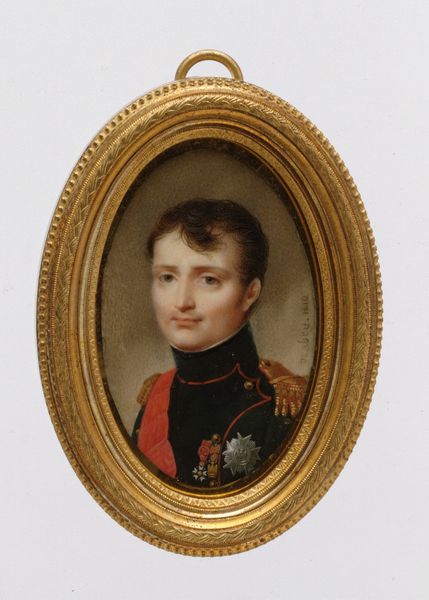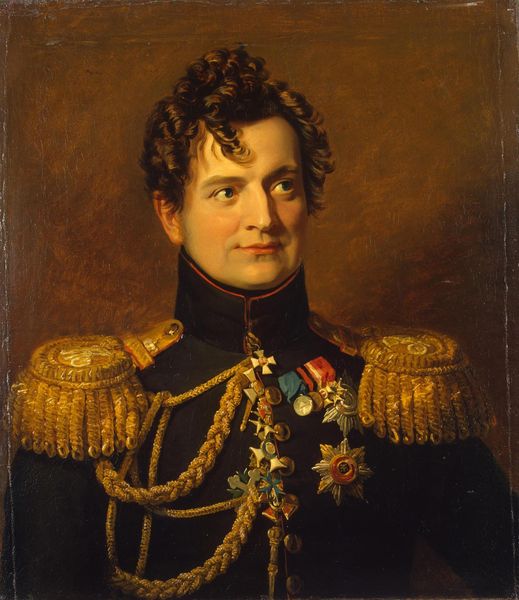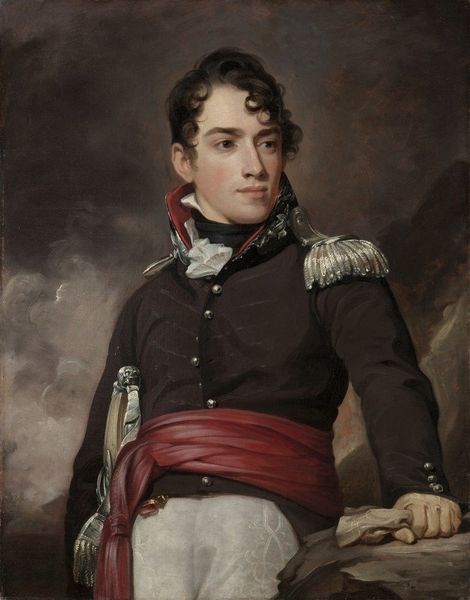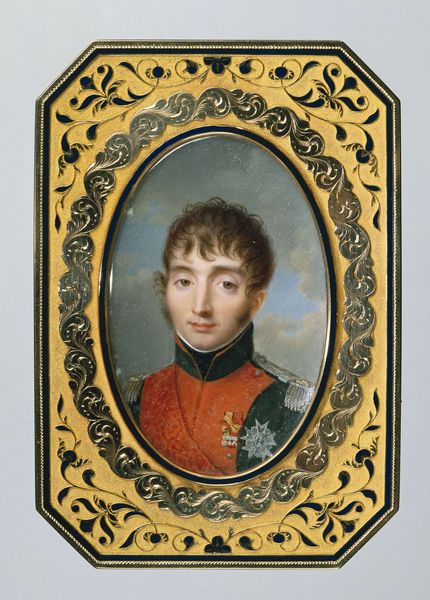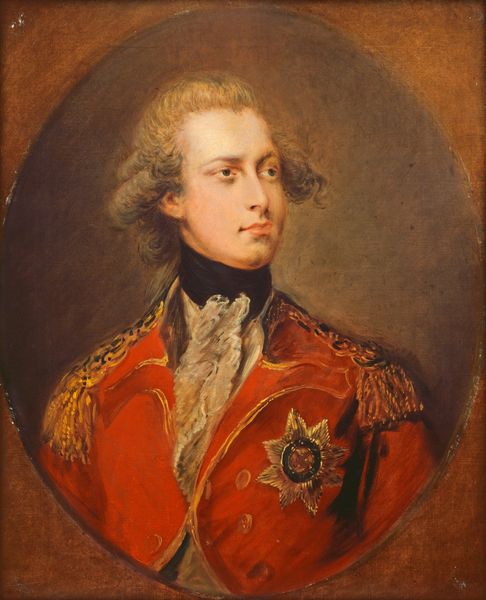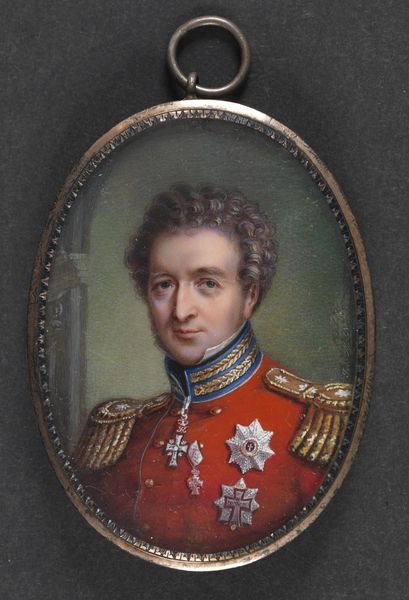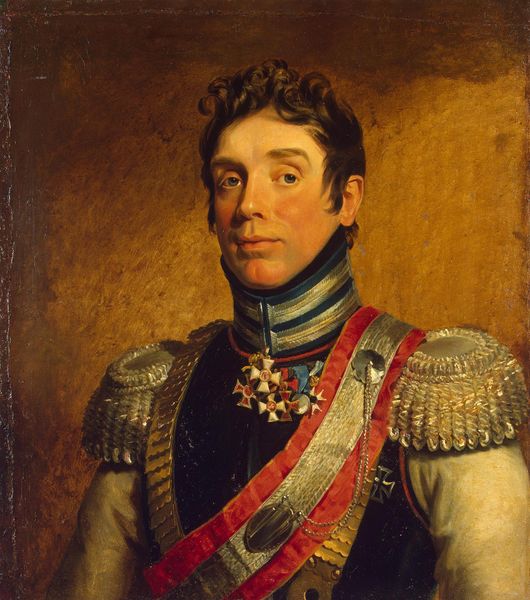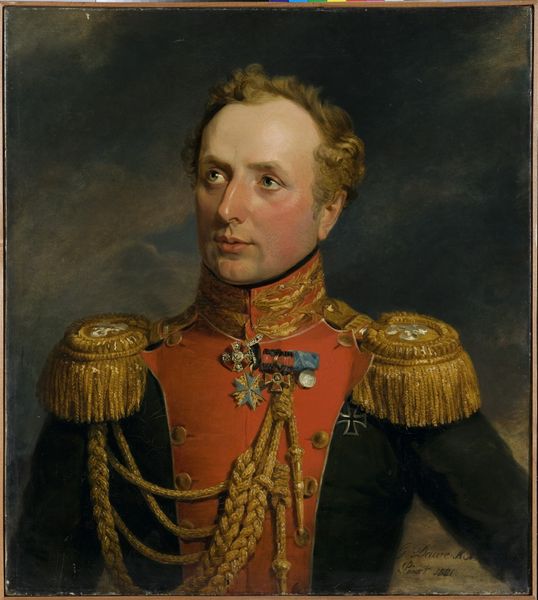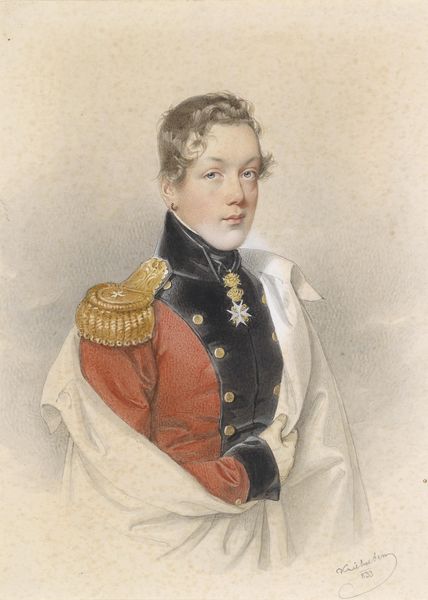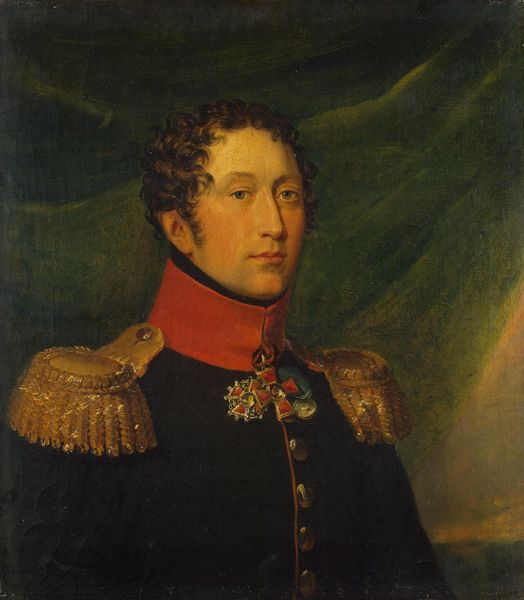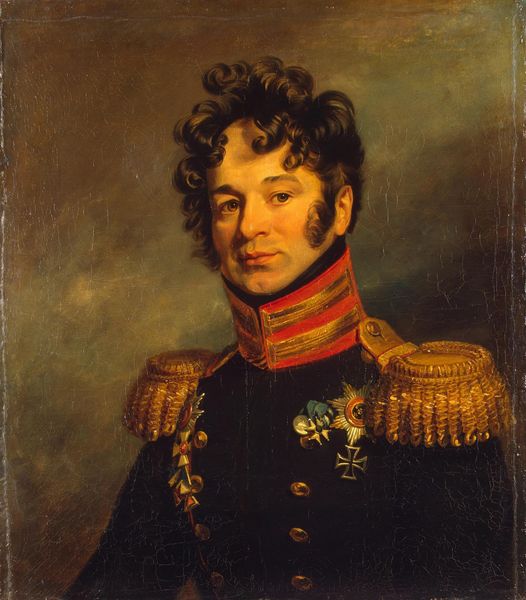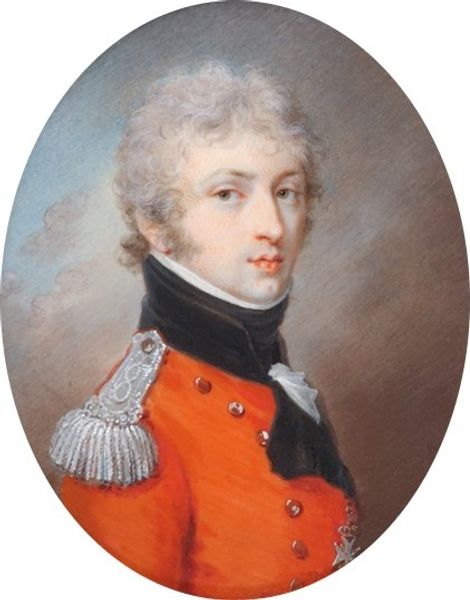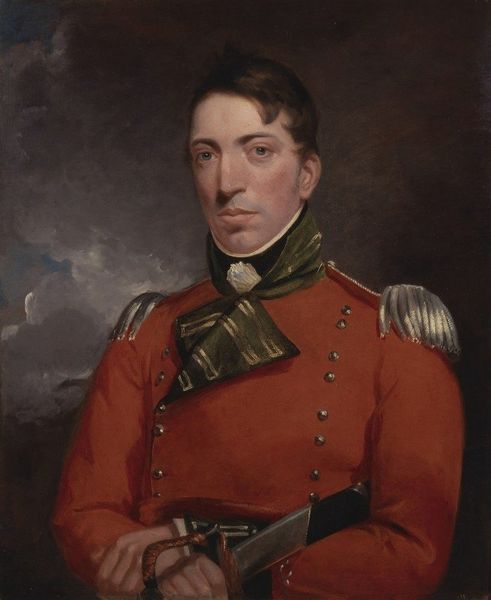
George IV (1762–1830) as Prince Regent, after Lawrence 1816
0:00
0:00
painting
#
portrait
#
painting
#
caricature
#
historical fashion
#
romanticism
#
men
#
history-painting
#
academic-art
#
miniature
Dimensions: Oval, 2 1/2 x 2 in. (64 x 49 mm)
Copyright: Public Domain
Curator: This striking miniature is "George IV (1762–1830) as Prince Regent, after Lawrence" created in 1816 by Henry Bone. Editor: My first impression is that this piece possesses a regal almost performative presence within such a confined space. There's a wealth of symbolism, wouldn’t you agree? Curator: Absolutely, let's delve into that. Bone positions George, during his time as Prince Regent, within the grand narrative of the British monarchy and empire. What does this representation say about the Regency era? It seems intended to assert legitimacy during a tumultuous political climate. Editor: Indeed, consider the significance of the red. Traditionally a colour associated with power, war, and aristocracy; coupled with the gold detailing on the uniform it denotes luxury, authority and lineage. Think, too, about the layering of these many emblems. It suggests this elaborate and self-conscious construction of the Prince Regent's persona, laden with symbols of honour and status. Curator: The Romantic style here offers a specific visual language for portraying power, though some critics might argue its also used as compensation, given that at the time George wasn't viewed so highly. This piece really seems like an academic exercise in legacy building and self-justification. Editor: And yet the miniature scale provides such an intimate and accessible view of this monarch. I wonder what he represented for his generation and perhaps also how his representation of power stands today? Curator: That’s fascinating to consider. His reign really embodies many complex issues. Examining visual portrayals like this through our current lenses offers crucial insights into historical power dynamics and enduring colonial legacies. Editor: It's a piece ripe with iconography that really sparks our critical thinking. I will leave with thinking how it is such a powerful window into both personal and cultural history, revealing hidden biases in our society's relationship with those in power.
Comments
No comments
Be the first to comment and join the conversation on the ultimate creative platform.
